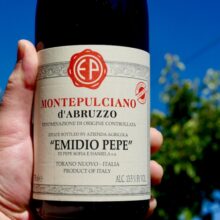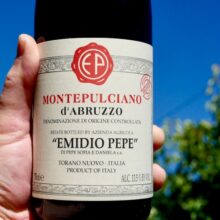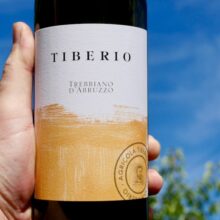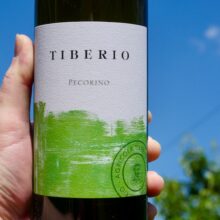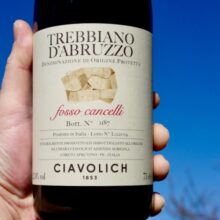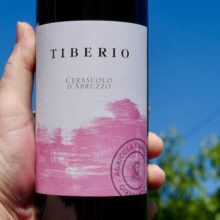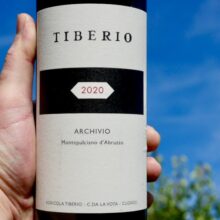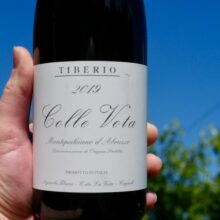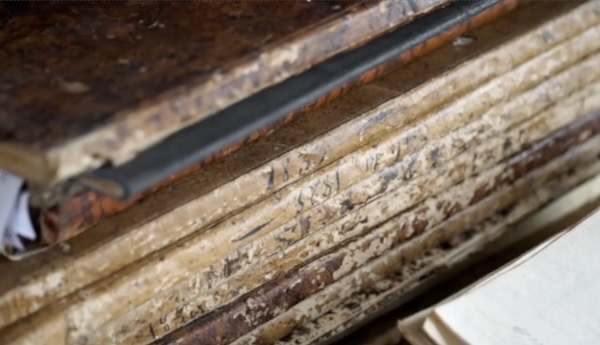
Winery
Valentini
In the 21st century, the Valentini Trebbiano d’Abruzzo has been made and released from the 2001, 2003, 2006, 2012, 2013, 2015, 2017, 2019, 2020 and 2021.
With so much focus on the extraordinary Trebbiano, it can be easy to overlook the fact that Valentini has also been making the greatest Montepulciano d’Abruzzo for just as long, as well as a transcendent Cerasuolo rosato, also from Montepulciano grapes.
But Francesco, as famously selective as his father, has only bottled the Montepulciano rosso three times in the past decade. Other vintages have been sold off in bulk to local restaurants to use as house wine, making it even less frequently seen than the rare Trebbiano.
Francesco Valentini and his son, Gabriele, are adamant about not bottling Montepulciano unless it displays its traditional red color and doesn’t show any signs of over-ripeness.
About Azienda Agricola Valentini
The Valentini estate is revered by wine lovers, known for its textural, rich and age-worthy Trebbiano d’Abruzzo, as well as its exceedingly rare Montepulciano and Cerasuolo d’Abruzzo. An artisanal address with natural-leaning methods, the property’s wines have mythical status among collectors.
Widely regarded as one of Abruzzo’s greatest winemaker, Edoardo Valentini produced wine commercially from the 1956 vintage until his death in 2006 at the age of 72. Over the course of his half-century career, his reputation among connoisseurs of fine Italian wines grew as bottles of his Montepulciano, Cerasuolo, and Trebbiano found their way onto tables and into tastings all over the world. His unique approach to working with vines that many in the wine community considered inferior, combined with his eccentric personality, helped solidify his legendary status. However, it was the exceptional quality of his wines that truly cemented his reputation as one of Italy’s finest natural winemakers.
Having given up a career in law, Valentini returned with his family to their ancestral home in the village of Loreto Aprutino, about a half hour inland from Pescara. There, he tended to around 60 hectares of land under vines, spread across several vineyard sites, as well as hundreds of acres planted with fruit trees and olives. While farming contributed significantly to his livelihood, life in the rural village also allowed him to pursue both agriculture and winemaking as intellectual passions. Valentini was famously reluctant to share details of his cellar techniques, but the consistent quality of his wines over the decades attests to his disciplined practices and unyielding commitment to excellence.
Notoriously reclusive when it came to media attention, Valentini disregarded wine marketing and shunned the spotlight. Consequently, much of what we know about him and his wines only adds to the mystique surrounding both. Since Edoardo Valentini’s passing, his son Francesco Paolo, along with his wife Elèna and son Gabriele, has carried on the production of the family’s revered wines with the same dedication and precision. Tasting the wines today, it is clear that the Valentini legacy remains strong and is in capable hands.
You’ll find a serious of films deep diving into Azienda Agricola Valentini on each wine profile including an exploration of Emidio Pepe & Valentini by Chiara Pepe
In the Vineyard
The estate consists of circa 60 hectares, split between olive groves and vineyards, on sandy, calcareous, clay soils close to the Adriatic Sea, near the village of Loreto Aprutino. Despite the property’s relatively large size, only a tiny proportion of the fruit is used for the wines – with roughly 10% meeting the stringent quality criteria and making it into bottle, with the rest sold off to the local co-op. Indeed, the wines are only made when the vintage is good enough – meaning sometimes all the fruit is sacrificed and no wine is produced under the Valentini name.
What is generally known is that the vineyard is dry-farmed to intensify fruit, with organic practices always in place. Vines are trained on overhead pergolas, shielding grapes from sun and ground heat to prevent early ripening.
Valentini believe that their true, almost-extinct Trebbiano d’Abruzzo clones offer the most profound expression of Abruzzo’s terroir. Under their closely guarded methods and strict selection process, the wine achieves a compelling form—deserving of its reputation as one of the world’s greatest white wines.
In the Winery
In the cellar, old basket presses, glass-lined vats, and large Slavonian oak casks—some from the 18th and 19th centuries—are still used. Wines are fermented with natural yeasts, bottled unfiltered, and undergo malolactic fermentation in bottle, producing CO₂ that acts as a natural antioxidant and reduces the need for sulphur.
Where in the World is Azienda Agricola Valentini?
Valentini is based in Loreto Aprutino, Province of Pescara, Abruzzo, Italy.

